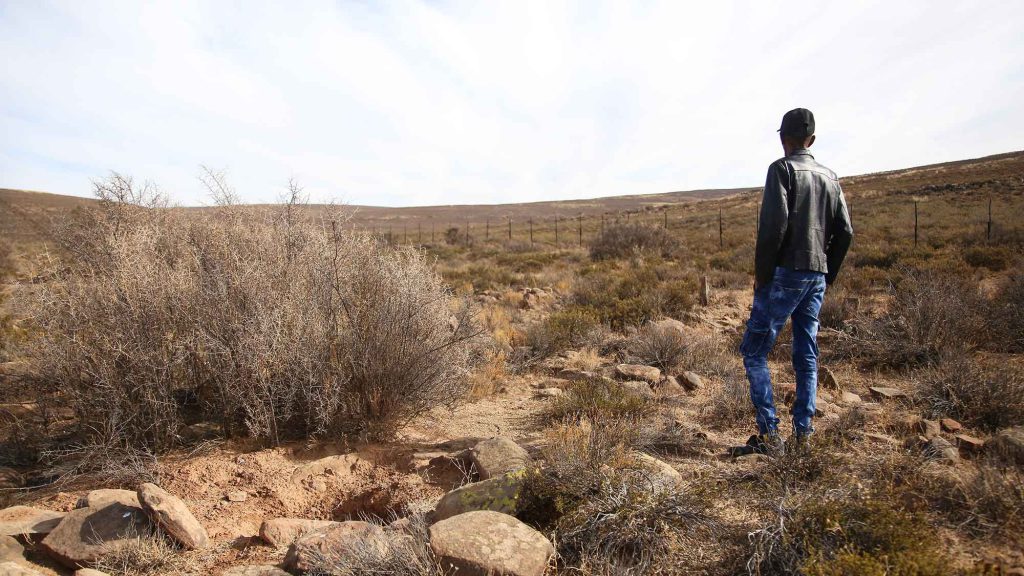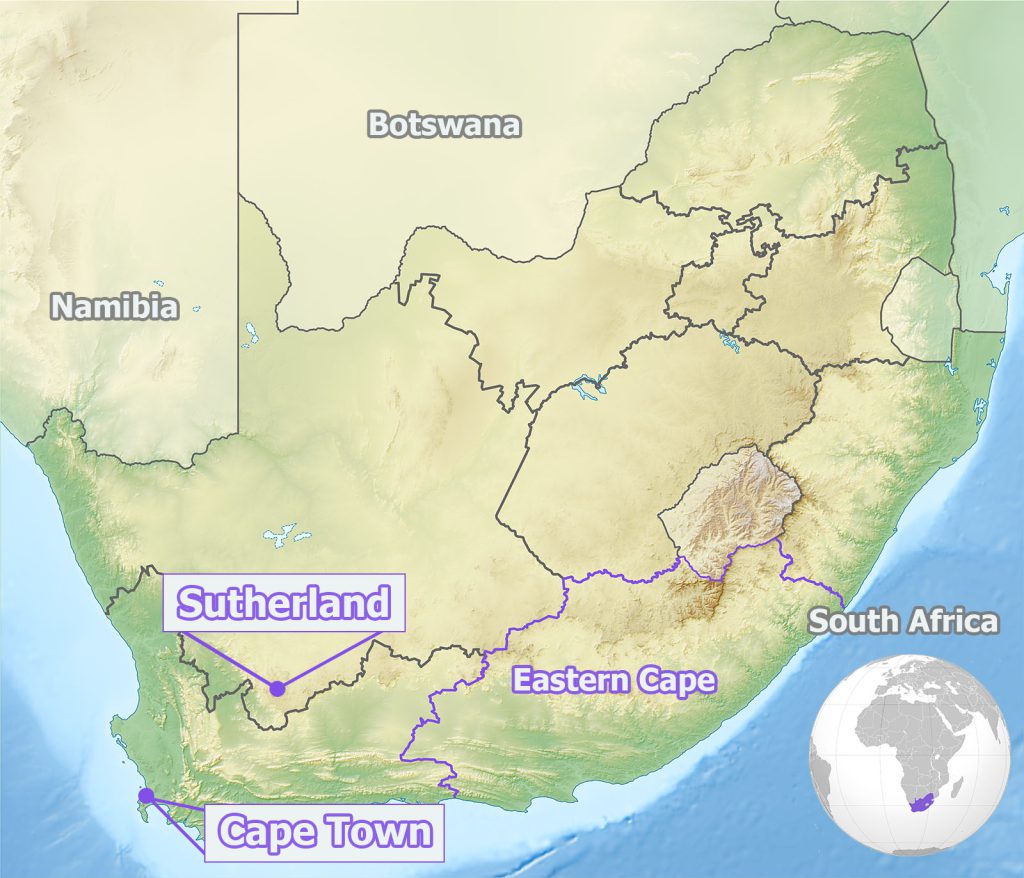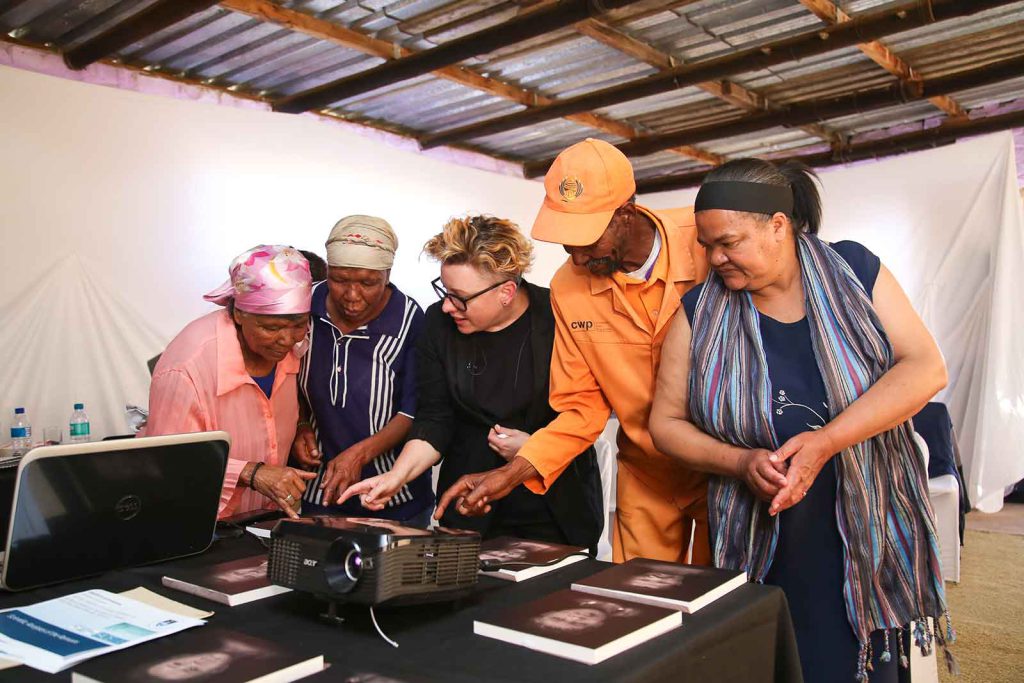Restoring Dignity to Stolen Ancestors

Almost 100 years ago, a University of Cape Town (UCT) medical student dug up eight skeletons from his family’s farm near the town of Sutherland, South Africa. The student intentionally exhumed the people, some of whom his family knew personally, and donated the remains to his university for study.
All of the deceased had gravestones of some kind. The student provided names and information about how some of the individuals had died. He also donated a ninth body, which had been found in the nearby mountains.
The men, women, and children whose remains came from the farm died between 1875 and 1913. All of these people were either San or Khoe, Indigenous peoples of South Africa. The person buried in the mountains lived about 700 years ago.
The San and Khoe groups were the region’s first people. From the 18th century onward, European colonists massacred people from both groups. Those who survived were often forced into service on farms, such as the one in Sutherland.
When biological anthropologist Victoria Gibbon uncovered the skeletons at the university in 2017 during an audit of the collection, she knew that the remains had been unethically obtained. A moratorium was placed on their use immediately. They needed to be returned to their descendants, she explains.
Armed with two full names from the collection records—Klaas Stuurman and Cornelius Abraham—Gibbon and a team from the university visited the region to locate the descendants and to return their lost family members’ remains. “My expectation was they would be reburied and the families or community would have closure. I did not anticipate [the descendants] would request as much information as possible,” Gibbon says.
In response, Gibbon organized an unprecedented effort to provide that knowledge. What followed was a two-year journey, involving researchers from multiple disciplines in three countries, Sutherland communities, and numerous other parties, to understand who these people were, how they lived and died, and even what they looked like—filling in gaps in the country’s brutal and often expunged history.
For South Africa, this effort is an important first. There is no internationally established method for repatriating unethically obtained human remains. Despite numerous such collections in South Africa, there is also no legislation governing restitution, repatriation, and reburial. UCT’s efforts could guide future regulations and inform other efforts around the world.
Globally, activists, communities, and scholars are pushing museums and universities to locate their unethically or unwittingly obtained human remains and return them to descendants. In the United States, for example, many institutions are researching the provenance of Native American remains to return them to lineal descendants and communities as part of the 1990 Native American Graves Protection and Repatriation Act.
Some nations are engaging in high-profile discussions of the return of ancient human remains, such as the Kabwe cranium, held by London’s Natural History Museum but found in what is now Zambia. In November, Germany said it would return the remains of 45 Australian Indigenous people. And in October, the U.S. administration indicated that Finland would return the remains of Native Americans removed from burial sites in 1891 by a researcher from Scandinavia.
But often recipient communities are left unaided to deal with the historical trauma, of which the remains are a reminder. Sometimes these communities must even handle the reburial on their own. “What is important about [the UCT] example is the involvement of the descendants through the project and particularly the role of the university in not only identifying the remains but also supporting the whole process,” says Sarah Morton, a heritage specialist at Bath Spa University in the U.K. who did not assist in the UCT effort.
“It was very important to have this information to confirm who we are and where we come from,” says Alfred Stuurman.
San hunter-gatherers lived in the region first. They later shared the land with Khoe pastoralists for hundreds of years prior to the arrival of Bantu-speaking people about 1,800 years ago. When Europeans began colonizing the country in the 17th century, European scientists saw the San and Khoe as a “disappearing race” linked to extinct hominins. Grave robbing—like the work of the medical student in Sutherland—was a major source of bodies for study. Some of these remains formed the basis of museum collections in South Africa and overseas.
Despite the fact that San and Khoe bodies were treated as scientific curiosities, much of these communities’ history has been lost. First colonizers and later leaders of the apartheid regime, which came to power in 1948 and legally sanctioned racism, suppressed or ignored the histories of Indigenous populations. Some of these individuals argued that sub-Saharan Africa had been uninhabited.
Given the dearth of knowledge about San and Khoe life in the area, when the UCT researchers tracked down members of the Stuurman and Abraham families in 2018, those families requested as much information about the deceased people as possible.
Starting in that year, Gibbon headed up an interdisciplinary team, which included researchers from the humanities and social, health, and natural scientists, to unravel the mystery. In total, the nine skeletons included seven adults and two children.
Their bones revealed that they led active lives of hard physical labor. Some had signs of healed trauma, such as broken fingers and cheekbones. Nearly all of them suffered from poor dental health. One adult found on the farm died from head trauma—as did the man discovered in the mountains.
Researchers from the Max-Planck-Gesellschaft’s Max Planck Institute for the Science of Human History in Germany performed ancient DNA analyses, showing some of the adults were related by second and third degrees. Three individuals also had strong genetic links with the Khomani San, a specific group of San people.
Face Lab at Liverpool John Moores University in the United Kingdom created reconstructions of the faces of the deceased. That work offered families a possible visual image of their ancestors at their time of death.
The science also helped to arbitrate other claims on the remains. Another group named Stuurman, who lives in the Eastern Cape, a province on the other side of the country, had disputed that the individuals buried in Sutherland had deep roots in the region. However, isotopic bone analysis revealed that the people came from an arid environment like Sutherland, rather than the wetter Eastern Cape.
“It was very important to have this information to confirm who we are and where we come from,” Alfred Stuurman, one of the family members, said at a press conference last month. “This information shows us that we were from this area and not from the Eastern Cape.”
UCT researchers and administrators hope that this process can be a model for the future. And scholars at other institutions not involved in this process praised the effort. For example, Chris Dudar, manager of the repatriation laboratory at the Smithsonian Institution’s National Museum of Natural History, noted that the practice of researchers engaging with descendants to restitute remains “is not new per se, but the particular historic elements involved in the UCT case are unique—as is each repatriation case.”
Indeed, Gibbon notes that because restitution processes must suit the circumstances and stakeholders, there is no one solution. But one lesson that could set a precedent for other efforts was the choice to place an immediate moratorium on handling the remains. “From that moment, the decisions of what happened to the remains and their records was in the hands of the community,” she says.
Asked whether there were more unethically obtained skeletons in the university’s collection, Gibbon says: “This field in South Africa, and internationally, is constantly changing. It is likely with the new legislation on restitution, repatriation, and reburial that definitions and criteria will change. If the criteria for unethically obtained changes, then—yes—there could be more.”



































